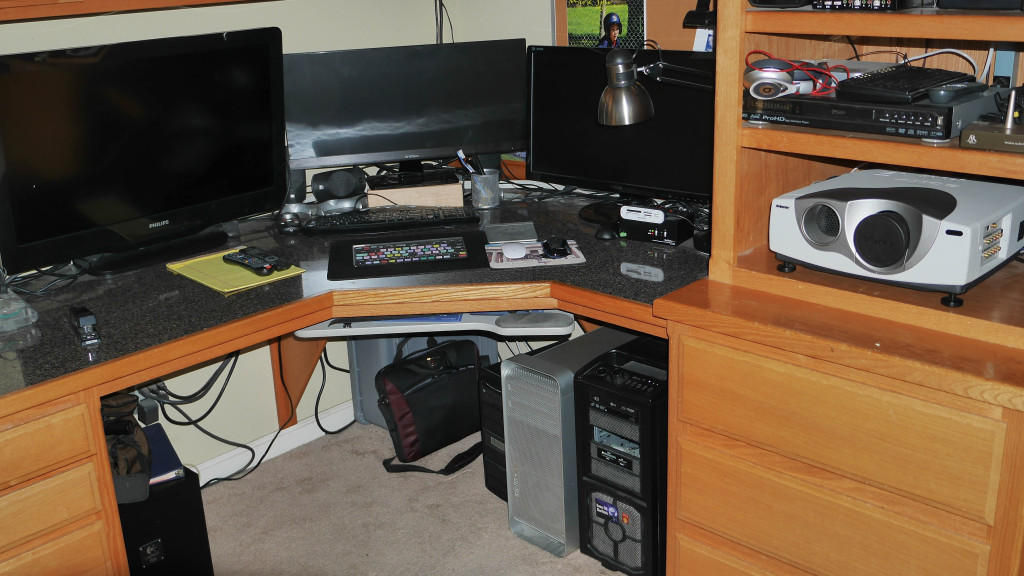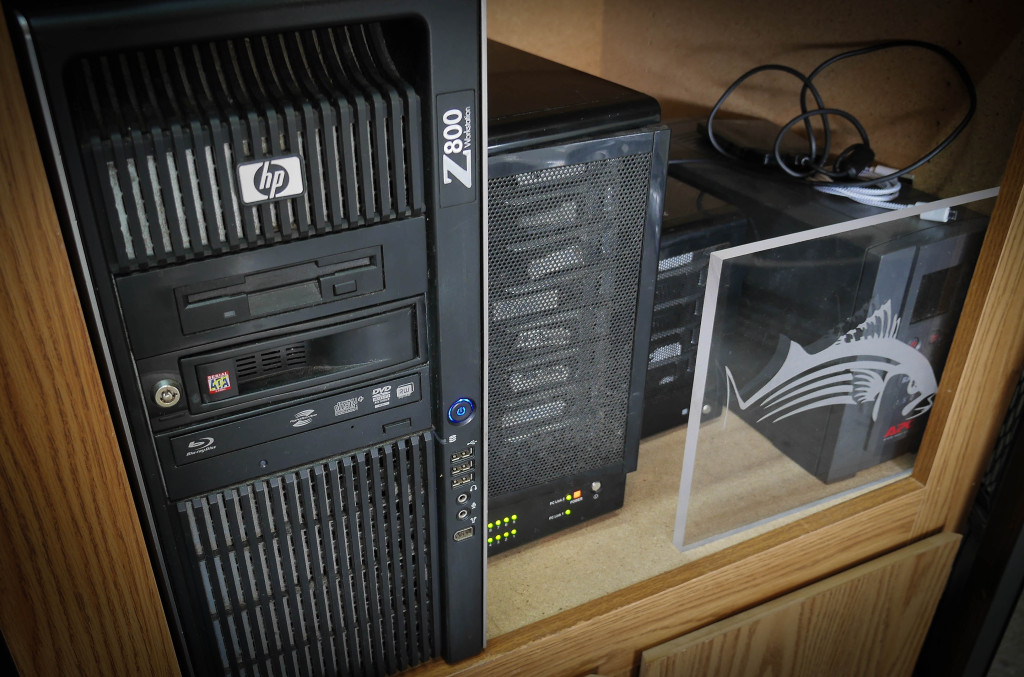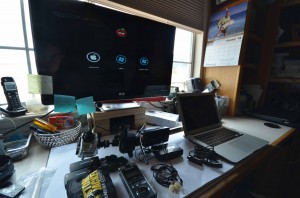HP Z800 Workstation Combines ultimate performance with a revolutionary new industrial design delivers the extreme speed and massive expandability.
-
Intel Xeon X5570, 2.93 GHz, 8 MB cache, 1333 MHz Memory, 6.4 GT/s QPI, 95W
-
NUMA (Non-Uniform Memory Architecture), Memory Node Interleave
-
24 GB (6×4 GB) DDR3-1333 ECC Registered RAM 2-CPU
- NVIDIA Quadro FX 3800 1.0 GB PCIe Graphics Card
- Running a Worstation Modified Server 2008 kernal.
- Running 2 SATA3 Raid enclosure spinning 30 Terrabytes
Internet Connectivity -Comcast Buisness DOCSYS 3
Slingbox HD running a Comcast HD Reciever
Hackintosh Workstations Running on I7
Building a hackintosh—that is, installing Mac OS X on non-Apple hardware—used to require extremely restricted hardware choices and quite a bit of know-how. Now your options are vast and the installation process is fairly simple. With that in mind, here is our always up-to-date guide to building a hackintosh that will walk you through purchasing compatible parts, building your machine, and installing OS X all on your own. A hackintosh is simply any non-Apple hardware that has been made—or “hacked”—to run Mac OS X. This could apply to any hardware, whether it’s a manufacturer made or personally-built computer. The CustoMac Pro Socket 2011 is the moist powerful single CPU system you can build. My best friend for this project was easily tonymacx86.com, which has a clear breakdowns of compatible parts and software guides.
Full parts list at Amazon:
- Intel Core i7-4770K Quad-Core Desktop Processor 3.5 GHZ – $320
- Corsair Enthusiast Series 650W Fan – $99.99
- Gigabyte GA-Z87X-UD5H Z87 LGA 1150 Motherboard – $222
- TP-LINK TL-WDN4800 Dual Band Wireless PCI Express Adapter – $43
- Corsair Vengeance 16GB DDR3 RAM – $160
- SanDisk Extreme SSD 120 GB SSD – $117 (or any SATA 3 SSD)
- EVGA GeForce GTX760 Graphics Card – $265
- Seagate Barracuda 2 TB HDD – $80 (or any 1-4TB SATA3 HDD)
- Fractal Design Define R4 Case – $132
- Seiki 39-inch 4K Display – $499 (Varies wildly though)
Total cost without display: $1439.
With a pair of Korean made 2K display, under ~$2,000…
MacBook Air I7
HD Audio Server
 I3 PC running Window & and FOOBAR for the ultimate in Audio Bitstreaming. 8 Speaker configuration built around a Denon AVR 7.2ch Integrated Network A/V Receiver
I3 PC running Window & and FOOBAR for the ultimate in Audio Bitstreaming. 8 Speaker configuration built around a Denon AVR 7.2ch Integrated Network A/V Receiver
Editing Workstation



